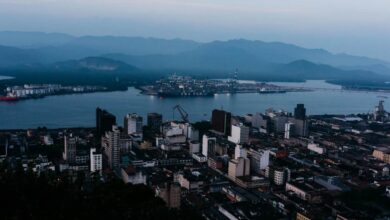The United Nations solution for the overconsumption of material resources

United Nations Environment Program proposes seven strategies for a more sustainable use of resources
The extraction of material resources will triple this year, compared to 1970
Current trends predict that the use of material resources will reach 88.6 billion tonnes in 2017 and will double to 186 billion tones by 2050, according to the latest report of the International Resources Panel of the United Nations Environment Program (UNEP).
This report was published by the United Nations Assembly for the Environment, the world’s highest environmental decision-making body, which took place from December 4 to 6 in Nairobi, Kenya.
Current situation

The continued growth of human population and their economies is resulting in the emergence of billions of new middle-class consumers worldwide, and rapidly expanding urban settlements in many countries. “Current patterns and processes of production and consumption raise serious questions about the ability of the planetary resource base to meet the material and energy needs of the global economy and human societies”, warns the report.
The extraction and use of resources are creating environmental impacts such as land degradation, loss of biodiversity and contamination of water and air. Scientists have warned that “planetary boundaries”, which mark the “safe operating space” for resource use and pollution, are close to being crossed or have already been crossed, for several categories of environmental impact.
International Resource Panel Report
The International Resources Panel is a group of eminent scientists specialized in resource management issues, established by the United Nations Environment Program (UNEP) in 2007.
From a database about material resources (biomass, fossil fuels, metals, and non-metallic minerals), that covers almost five decades (from 1970 to 2017) and 191 countries, specialists conducted an analysis on the current use of natural resources in the world. They evaluated the measures that are being implemented globally and their possible consequences. From that point, they proposed 7 strategies for a more sustainable use of resources throughout the economy, including a consideration of appropriate policy instruments and examples of good practices of cities and countries around the world.
For the panel, it is important to create “resource efficiency” policies that separate the use of natural resources from economic growth, and result in the achievement of the Sustainable Development Goals.
“A new economic paradigm is needed to improve resource productivity and allow for production and consumption systems to be run with lower material and energy requirements, as well as reducing waste and emissions while providing all services needed”, expresses the report.
These policies could reduce the global need for resources by more than 28% by the year 2050, and project global economic growth from 3% to 5% above the current trend. Also, it could cut greenhouse gas emissions globally around 60 percent in 2050 in relation to the 2015 levels.
The UN Environment Assembly

With the participation of more than 4,000 heads of state, ministers, business leaders, UN officials, representatives of civil societies and activists, the assembly resulted in a ministerial declaration entitled: “Towards a pollution-free planet”.
“The science we have seen at this assembly shows we have been so bad at looking after our planet that we have very little room to make more mistakes,” said Dr. Edgar Gutiérrez, Minister of Environment and Energy of Costa Rica and the President of the 2017 UN Environment Assembly.
The assembly also approved 13 non-binding resolutions and three decisions, in order to support the global commitment for a meaningful positive change.
“We had two missions at this assembly. One (agreeing on action) is accomplished. The second, we must start tomorrow.” said Ibrahim Thiaw, UN Environment’s deputy head, for the external press release, published on December 7, 2017.
The next UN Environment Assembly is expected in two years’ time. The President of the next Assembly will be Estonian Minister of the Environment, Mr. Siim Kiisler, who was appointed at the end of the meeting.
LatinAmerican Post | Camila González C.
Copy edited by Marcela Peñaloza






